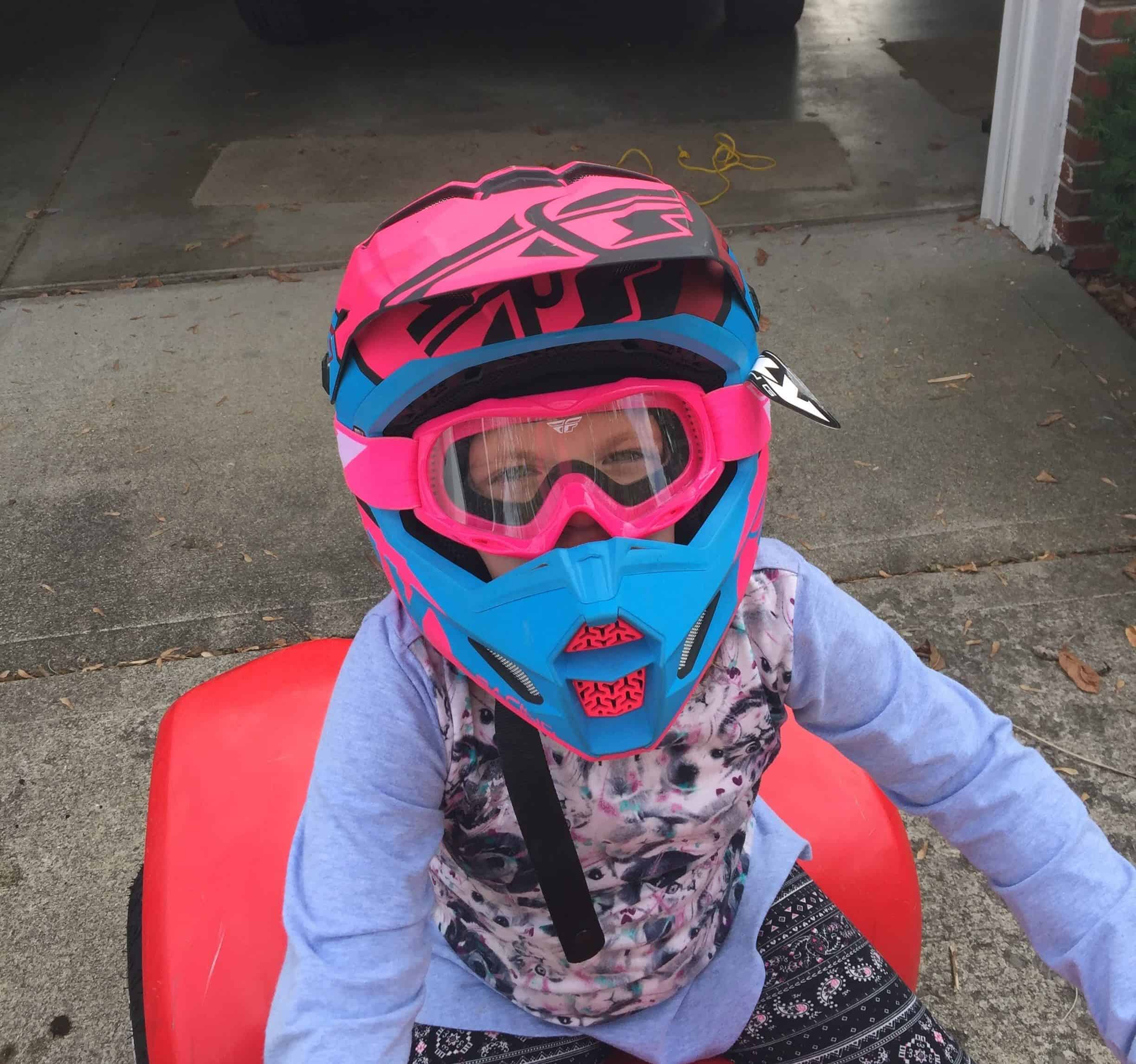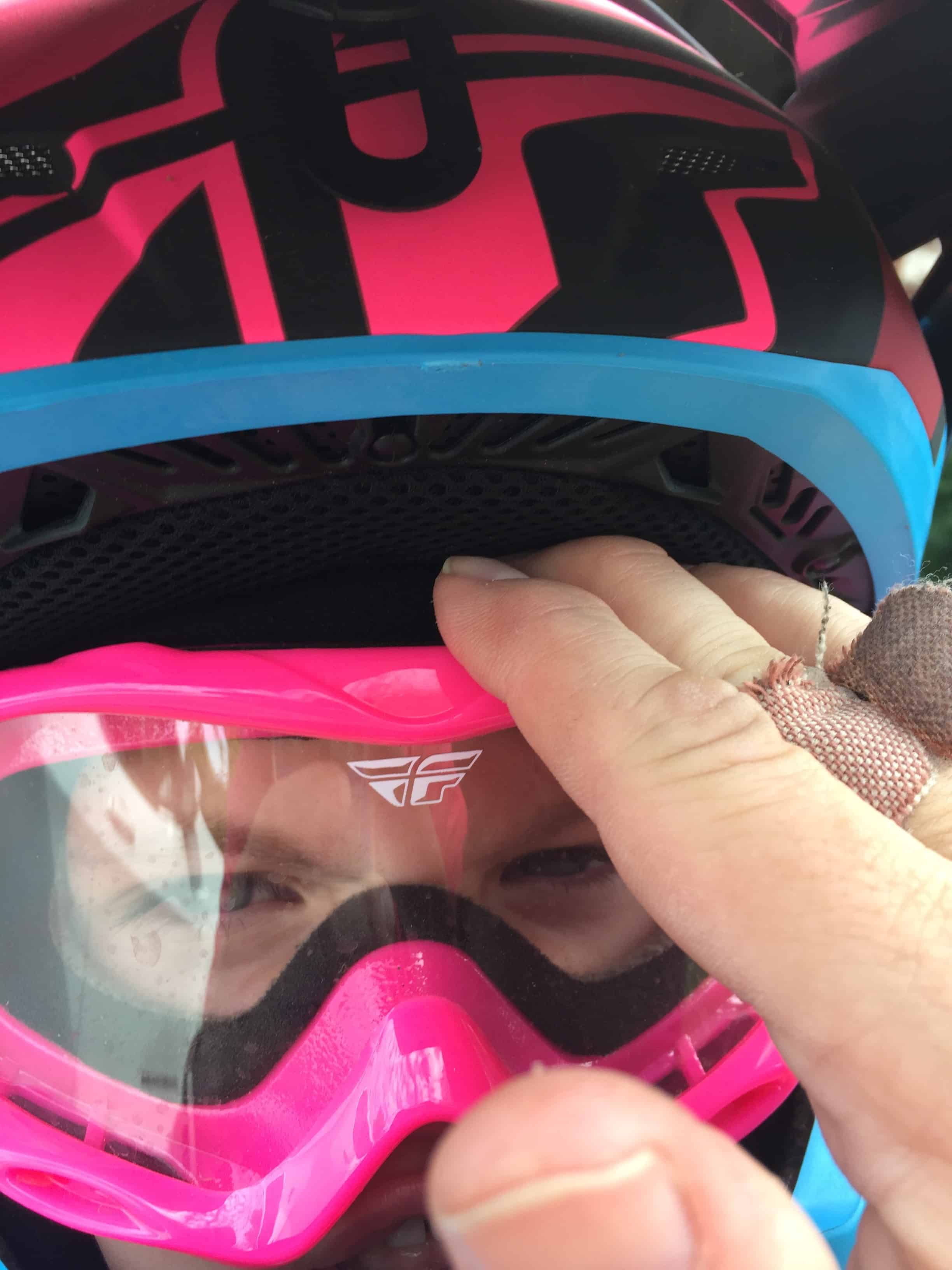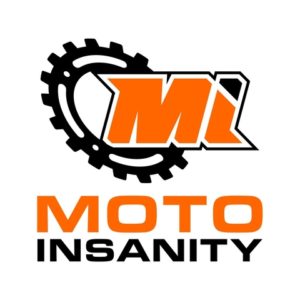
My dad called me one afternoon and asked how my wife would respond to getting my 5-year-old a 4-wheeler. , I was excited but know my daughter would need a helmet first and other protective gear. I completed some research and here is what I found.
How should a motorcycle helmet fit a child? Start by sizing your child’s head (see the chart below.) The helmet should fit snugly all around the child’s head and should not slide around as she shakes her head. An improper fitting helmet will not fully protect the child’s head.
Size Chart
| Size | Centimeter | Hat Size | Inches | |
| XXS | 51-52 | 6 3/8-6 1/2 | 20-20 1/2 | |
| XS | 53-54 | 6 5/8- 6 3/4 | 20 7/8- 21 1/4 | |
| S | 55-56 | 6 7/8- 7 | 21 5/8-22 | |
| M | 57-58 | 7 1/8- 7 1/4 | 22 1/2- 22 7/8 | |
| L | 59-60 | 7 3/8- 7 1/2 | 23 1/4- 23 5/8 | |
| XL | 61-62 | 7 5/8- 7 3/4 | 24- 24 3/8 | |
| XXL | 63-64 | 7 7/8- 8 | 24 3/4- 25 1/4 | |
| XXXL | 65-66 | 8 1/8- 8 1/4 | 25 5/8- 26 | |
| YOUTH S | 49-50 | 6 1/8- 6 1/4 | 19 1/4- 19 3/4 | |
| YOUTH M | 51-52 | 6 3/8- 6 1/2 | 20- 20 1/2 | |
| YOUTH L | 53-54 | 6 5/8- 6 3/4 | 20 7/8- 21 1/4 | |
| YOUTH S/M | 49-50 | 6 1/8- 6 1/4 | 19 1/4- 19 3/4 |
How To Measure Your Child’s Head
You need to measure the size of of your child’s head to start the buying process for the helmet. You cannot measure just any spot around your child’s head.
Here are the steps to properly measure a youth’s head.
- Grab a flexible tape measure or a long piece of string. I find the tape measures used for sewing and fabric work the best.
- Place the tape or string around the child’s head about 3/8 to 1/2 inch above the child’s eyes and ears.
- Look at the tape or string around the head to ensure universal placement around the head. We had to measure my daughter a few times because the measurements were not the same. I finally realized she was moving the tape.
I might suggest having a second adult help with holding and placing the tape around the child’s head to prevent it from moving.
4. Note the measurement. As I mentioned before, take the reading a few times to ensure accuracy.
If you use a string to measure the circumference of your child’s head, make sure you clearly mark the string. Then you lay out the string in a line to measure the overall length.
HELPFUL Hints
- If you are fitting the helmet to a girl, make sure her hair is not in a ponytail. She will not have her hair in a ponytail on the top of her head in the helmet as it would be uncomfortable. Take the measurement when her hair is down.
- The one exception to this tip is of she wears a ponytail in the down position to keep hair from flying all over the place.
- If you can, complete the measuring process while the youth is in a calm state. When I did this with my daughter, she was really excited about riding and would not sit still. Maybe completing the process without letting them know what it is for might help.
- Have the child sit in a chair with their back pressed up against the backrest. This will also help them from moving around.
How much should I spend on a motorcycle helmet?
Now you have the measurement, it is time to buy the helmet. You are probably wondering how much to spend on a helmet without breaking the bank.
The first place most people go is Amazon. Search for a youth motorcycle helmet and several options will pop-up for around $45 to $50. They look cool and perhaps your child will want one of them. You might think this is good. Your child likes it and it’s cheap.
STOP, DO NOT BUY IT!!! These helmets are cheap for a reason. Spending the extra money on a helmet means keeping them a little safer. I know all about the importance of helmets, but we can get into that another day.
My point, spend the extra money to upgrade the helmet. You should spend a minimum of $100. I bought a helmet at our local motorcycle dealership on sale. It was competitive to the prices I saw online.
If you cannot afford a $100 price point and still plan on letting your child ride, PLEASE have them wear something. Something is better than nothing.
Helmet Safety Ratings
Make sure you research the helmet for impact ratings. The last thing you want to find out is the rating after a motorcycle accident.
Three bodies produce ratings for motorcycle helmets.
Department of Transportation (DOT): This applies to the US and mainly street helmets. There are more and more helmets that are designed for adventure riding which involves on and off-road activity. The current standard that shows up is FMVSS 218.
Economic Commission for Europe (ECE): In a similar fashion to the US, a broad standard is set for Europe with ECE 22.05 rules. This standard applies to 50 countries.
SNELL: Snell Memorial Foundation produces the last standard. They have a voluntary testing procedure that is required by a few racing bodies. There are two standards available, one for street helmets and one for race helmets.
I would recommend going for the helmet that gets as close to the SNELL racing standard as possible. This will cost you more, but provide better protect for your child’s noggin.
Should I trust the customer reviews online?
Take what you see and hear with a grain of salt. While researching helmets for my kid I saw that Walmart of all places sells kids motorcycle helmets. Curiosity got the better of me so I started reading the reviews and here is what I found.
- 86% of the reviews give one helmet 5 stars.
- 7% give the helmet 4 stars.
- 7% give a rating of 1 star.
The ratings for the one star had more to do with the service of the company versus rating the helmet. Many of the positive comments mention the lightweight, how the kids can take the helmet on and off with no help, and the sticker design.
Here is part of what got me. They advertise the helmet as a BMX MX ATV Dirt Bike helmet. First let’s break this down by activity.
BMX refers to riding bicycles over ramps in the dirt. A moderate to low speed activity. It still exposes kids to risk and they should wear a helmet.
MX refers to motocross or riding a dirt bike off-road on a track or in the woods. A high speed activity.
ATV refers to all-terrain vehicle. Similar to a dirt bike, riding ATVs is a high speed activity.
I only hope the parents who bought this helmet are using it for BMX and not MX or ATVs. It only takes one wreck to find out the helmet did not provide enough protection.
So NO, you should not trust the star reviews posted online. It seems most of the people who posted a review did not complete enough research to understand if the helmet will protect their children’s head.
That being said, when you understand the different components of a helmet, you will be able to make a better purchase.
What Are the four parts of a helmet?
You now have a budget, a helmet size, and researched a few helmets. It is time to understand the four basic elements of a helmet.
Outer shell- The outer-shell absorbs and reduces the energy from the force of an impact. It helps objects from penetrating the inner layers of the helmet.
Impact liner- If a more severe impact takes place, the inner liner continues providing energy absorption the outer shell could not dissipate. This layer provides comfort for the rider as well.
Comfort Padding- This layer gives the helmet a snug fit and additional comfort. It is the softest layer of the helmet.
Chin Strap- A snug helmet is hard to come off, but you still need to keep it on the youth’s head. This is the main purpose of the chinstrap.
Now you understand the different components, go back and review these individual items on each of the helmets that made your short list. If you do not have a list of potential helmets, use this information to help you you research or evaluate each one as you shop.
Fitting The Helmet
After placing the helmet on the child, check the following areas.

- You should not be able to slide your fingers into the top or side of the helmet. If you can, the helmet is too big.
- Have the child shake their head around and notice the movement of the helmet. Does it slide around? If so, the helmet is too big. Another way to test the helmet is by grabbing the mouth guard section of the helmet and moving it around. Does your child’s head move with the helmet? If not, it is too big.
Tips on how to get a child to wear a helmet
You understand the importance of wearing a helmet. If you did not, you would not be reading this post.
But sometimes, kids push back without understanding why they should do certain things such as wearing a helmet. I wanted to share a few things to help keep the lids on kids.
- When they tell you it is “uncool” to wear a helmet. I quickly point to a bump on my head that l received from a bad ATV accident when I was 12. I ask them if they think I would have been better off looking cool or safe wearing a helmet.
- It is also a good idea to have the kids involved from the beginning with picking out a helmet design they like.
- Maintain a strict set of rules while riding on your property. Your land, your rules. Wearing a helmet is mandatory at our house.
- Reward good behavior with praise and spoiling the kids.
- Practice safety drills with the kids that starts off by putting on your helmet before sitting on the motorcycle or ATV.
- Kids learn by example. You should always wear a helmet. Before my child entered this world, I was a fan of choice. Now, I understand that in order for my kids to be safe; they need to have a role model. I want it to be me.
- When your kids say it gives them a headache to wear the helmet, it is time to check the fit. Headaches happen for a few reasons:
a. They have been on the bike for a really long time, and should probably take a break.
b. The helmet is too small, and it is time to buy a new one. It is the same as buying new shoes because their feet grow.
MX and ATV Goggles For Kids
Aside from purchasing the helmet, you need to purchase a set of goggles for your young rider. They need not be expensive, but they need to be high quality. A low quality set of goggles will not last long.
Why Do My Kids Need Goggles?
Helmets protect your child’s head and brain from injury, but they do not provide eye protection. Most youth helmets have an open face exposing their eyes and parts of their face to the elements. Getting dirt in your eyes at 20 or 30 mph brings the riding to a screeching halt.
As a kid, I can remember a few rides when I did not put on my goggles and dirt got into my eye. I immediately stopped the bike and worked on getting the dirt out of my eye. The pain was awful and I could not see.

You can imagine how tough it was to stop the bike. Once the bike stopped, the danger was not over. Other riders were having to navigate me and my bike because I stopped in the middle of the track. It was not my finest hour, but provided two valuable lessons:
- Make sure you pull over to a safe spot before you stop and turn off the motorcycle.
- Wear your goggles to keep crap out of your eyes.
Do they wear the goggles under or over the helmet?
This varies by the rider, but it seems the standard now is putting them on over the helmet.
When I was a kid and when I wore a helmet, I enjoyed wearing the goggles under the lid. I don’t know why, but it felt comfortable. After a while my strap stretched, and they did not fit.
While fitting gear for my daughter, she quickly informed me she does not like the strap under the helmet.
Caring For Goggles
Depending on how much your child rides and where, it will affect how they care for the goggles. I always like to use warm water to rinse off loose dirt. Then I will find a non abrasive towel so I can to wet and wipe off the lens.
A smart follow-up action that extends the life of your goggles are peel offs. You buy layers of film that get applied to the goggles. When you need to clean the lens, you peel off the layer and viola you can see again. They cost little ($10-$20.)
Related Questions:
Are helmets supposed to be tight? No, helmets should not be tight. They should be snug. The difference is in how restrictive the helmet is on your head.
How do you know if a helmet is too small? A helmet is too small when you have a difficult time putting the helmet over your head. You almost have to force the helmet onto your head. Headaches are another way to tell if the helmet is too small. You may get a headache after wearing the helmet for a long period.
Do motorcycle helmets have an expiration date? You should replace helmets every three to five years. The impact liner starts to breakdown and becomes less effective at absorbing the force of an impact.
